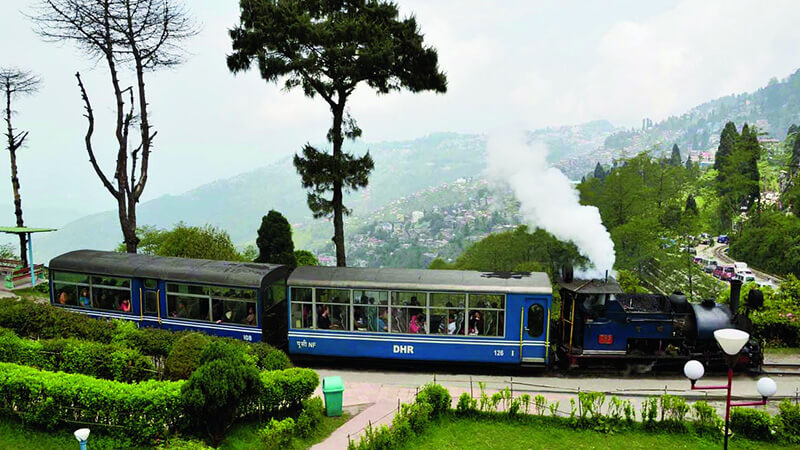Darjeeling Himalayan Railway: A Journey to World Heritage Status
The Darjeeling Himalayan Railway (DHR), fondly known as the “Toy Train,” holds a special place in the hearts of both locals and tourists. Beyond its scenic charm, this iconic narrow-gauge railway has achieved a remarkable distinction—the status of a UNESCO World Heritage Site. This article takes you on a captivating journey through history, the significance of the designation, and the impact it has had on preserving a unique slice of India’s heritage.
 A Glimpse into History
A Glimpse into History
Established in the late 19th century, the Darjeeling Himalayan Railway was originally conceived as a means of transporting tea from the hill stations of Darjeeling to the plains of Siliguri. The 88-kilometer route winds through breathtaking landscapes, steep inclines, and numerous bends, offering passengers an unforgettable journey.
The UNESCO World Heritage Status
In 1999, the Darjeeling Himalayan Railway earned the coveted title of a UNESCO World Heritage Site. This esteemed designation is a testament to the railway’s historical, cultural, and engineering significance. It is a recognition of the meticulous efforts that have gone into preserving its unique heritage and ensuring its legacy for future generations.
Reasons Behind the Designation
Several factors contributed to the Darjeeling Himalayan Railway’s World Heritage status:
1. Cultural Significance:
The DHR represents an exceptional fusion of British colonial engineering and indigenous craftsmanship, showcasing the convergence of two worlds in its design and operation.
2. Engineering Marvel:
The railway’s innovative engineering solutions, including the use of loops and zigzags to negotiate steep gradients, make it a remarkable example of early railway technology.
3. Historical Context:
The DHR’s role in connecting remote regions, transporting tea, and fostering tourism in the region adds to its historical and cultural significance.
4.Architectural and Natural Beauty:
The stations along the route, characterized by their charming architecture. The breathtaking landscapes they traverse, make the DHR an aesthetic marvel.
Impact of the UNESCO Designation
The UNESCO World Heritage status has brought about several positive impacts:
1. Preservation:
The designation has heightened awareness about the need to preserve and protect the DHR’s unique heritage. Lead to conservation efforts and infrastructural improvements.
2. Tourism Boost:
The status has increased tourism to the region, as travelers are drawn to experience the beauty and history of the “Toy Train” firsthand.
3. Cultural Appreciation:
The designation fosters a sense of pride and cultural appreciation among locals. Encouraging them to actively participate in preserving their heritage.
The Darjeeling Himalayan Railway’s journey to becoming a UNESCO World Heritage Site. It is a testament to its historical, cultural, and engineering significance. The designation underscores its importance as a living legacy that connects the past with the present. As tourists embark on a ride aboard the “Toy Train,” they not only experience a scenic journey but also become part of the ongoing narrative of preserving. Celebrating a unique slice of India’s heritage.




